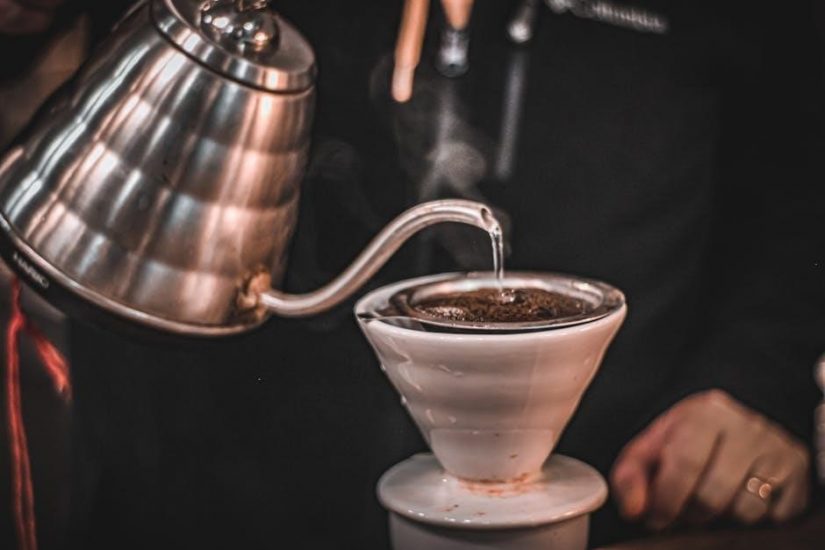Manual drip coffee‚ often called pour-over‚ involves slowly pouring hot water over ground beans in a filter. This manual method allows precise control over brewing parameters‚ resulting in a more flavorful and aromatic coffee experience.
What is Manual Drip Coffee?
Manual drip coffee involves pouring hot water over ground coffee beans in a filter‚ allowing the liquid to drip into a carafe. This method requires a cone or filter‚ offering precise control over brewing parameters like water flow and extraction time‚ ensuring a clean and flavorful cup of coffee.
Benefits of Manual Drip Brewing
Manual drip brewing offers precise control over brewing parameters‚ ensuring a customized cup. It enhances flavor profile and aroma by allowing adjustment of water temperature‚ grind size‚ and coffee-to-water ratio. This method also minimizes impurities‚ resulting in a cleaner taste. Additionally‚ it supports sustainability by reducing waste and energy consumption compared to automatic methods.

Equipment Needed for Manual Drip Coffee
A coffee grinder‚ filter‚ dripper or cone‚ kettle‚ and high-quality coffee beans are essential for manual drip coffee‚ ensuring a precise and personalized brewing experience.
Coffee Grinder
A coffee grinder is crucial for manual drip coffee‚ as it ensures freshly ground beans. Manual or electric grinders allow adjustment of grind size‚ which is vital for optimal extraction. Freshly grinding beans just before brewing enhances flavor and aroma‚ making it a key step in the manual drip process.
Coffee Filter
A coffee filter is essential for manual drip brewing‚ as it separates the liquid from the grounds. Made of paper‚ cloth‚ or metal‚ it ensures clean extraction and prevents grounds from entering the coffee. The filter’s material and size can affect the flavor profile‚ with paper filters absorbing oils for a cleaner taste and metal ones allowing more richness through.
Coffee Dripper or Cone
The coffee dripper‚ often cone-shaped‚ holds the filter and grounds‚ allowing water to flow through evenly. Made of materials like glass‚ ceramic‚ or stainless steel‚ it ensures heat resistance and durability. Its design features‚ such as ridges‚ prevent the filter from sticking and allow air to escape‚ promoting even extraction and a balanced flavor profile.
Kettle
A kettle is essential for heating water to the ideal temperature for manual drip coffee‚ typically between 195°F and 205°F. Choose a kettle with temperature control for precision. Stainless steel‚ copper‚ or glass kettles are popular for their durability and heat retention‚ ensuring consistent water temperature‚ which is crucial for optimal extraction and flavor in manual drip brewing.
Coffee Beans
Fresh‚ high-quality coffee beans are crucial for manual drip brewing. Opt for freshly roasted beans and grind them just before brewing to ensure optimal flavor; Medium to fine grinds work best for manual drip methods. Store beans in an airtight container in a cool‚ dark place to preserve freshness and aroma for a superior brewing experience.
Step-by-Step Brewing Process
Manual drip brewing involves preparation‚ blooming‚ brewing‚ and serving. Start by heating water and preparing your equipment. Bloom the coffee‚ then slowly pour water in a circular motion‚ allowing it to drip through the filter. Finally‚ pour the brewed coffee into your cup and enjoy the perfect brew.
Preparation
Start by heating water to the ideal temperature and preparing your equipment. Grind the coffee beans to the desired consistency. Place the filter in the dripper‚ rinse it with hot water‚ and discard the rinse water. Add the ground coffee to the filter‚ ensuring it’s evenly spread. Set everything over your cup or carafe.
Blooming
Blooming begins by pouring a small amount of water over the grounds to saturate them. Allow the coffee to bloom for 30-45 seconds. This step releases trapped gases and prepares the coffee for even extraction. The bloom enhances flavor and aroma‚ ensuring a balanced brew. It’s a crucial initial step in manual drip brewing.
Brewing
After blooming‚ slowly pour the remaining water in a circular motion over the coffee grounds. Ensure even saturation and avoid channeling. The water flows through the filter‚ extracting flavors. Monitor the flow rate and total brew time‚ typically 2-4 minutes‚ to achieve optimal extraction and a balanced cup of coffee.
Serving
Once the brewing process is complete‚ carefully pour the freshly brewed coffee into your cup. Serve immediately to enjoy the optimal flavor and aroma. You can sip it black or customize with milk‚ sugar‚ or other preferred additives. Manual drip coffee is best served fresh to appreciate its nuanced flavors and smooth texture.

Key Factors Affecting the Quality of Manual Drip Coffee
Coffee-to-water ratio‚ grind size‚ water temperature‚ and brew time significantly impact the final flavor. Balancing these elements ensures a well-extracted and enjoyable cup of manual drip coffee.
Coffee-to-Water Ratio
The coffee-to-water ratio is crucial for balanced extraction. A common recommendation is 32 grams of coffee for 500 ml of water‚ but this can vary based on personal preference. Adjusting the ratio ensures optimal flavor‚ preventing the coffee from tasting too weak or overly bitter‚ and allows for customization to suit individual tastes.
Grind Size
Grind size significantly impacts extraction quality. A medium grind is ideal for manual drip coffee‚ as it allows for even water flow and balanced extraction. A grind too fine can lead to over-extraction and bitterness‚ while too coarse may result in under-extraction and a weak flavor. Consistent grinding ensures optimal brewing results.
Water Temperature
Water temperature is crucial for optimal extraction in manual drip coffee. Ideal temperatures range between 195°F and 205°F. Water that’s too hot can burn the coffee‚ while water that’s too cool may result in under-extraction. Using a thermometer ensures precision‚ allowing for a balanced and flavorful brew.
Brew Time
Brew time is the duration water interacts with coffee grounds. Ideal manual drip brew time is between 2-4 minutes. Longer times can lead to bitterness‚ while shorter times result in under-extraction. Adjusting grind size and pouring technique helps achieve optimal extraction. Monitoring ensures a balanced and flavorful cup‚ enhancing the overall coffee experience.
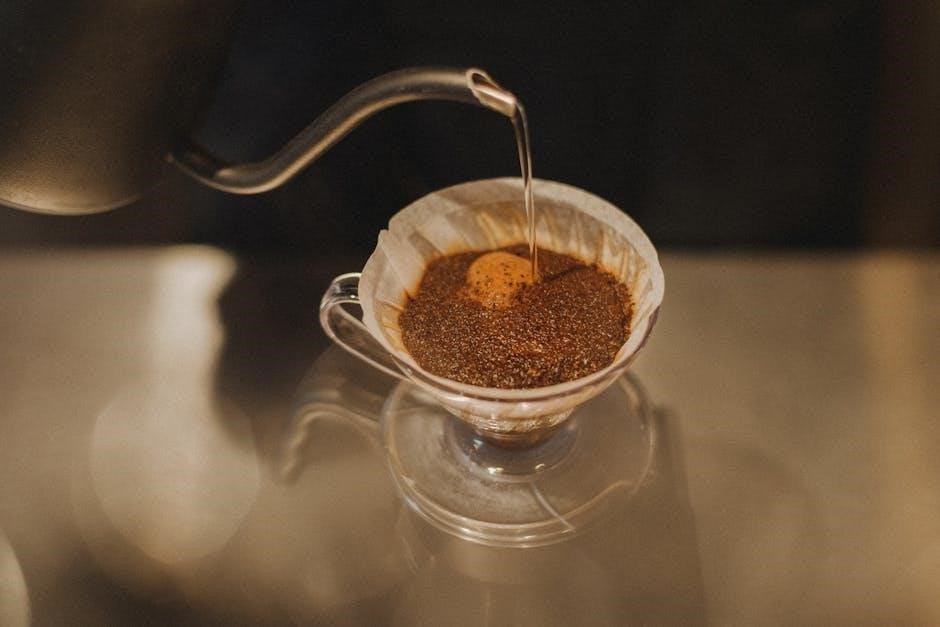
Tips for Perfecting Your Manual Drip Brew
Use freshly roasted beans‚ precise measurements‚ and optimal water temperature. Experiment with grind size and pouring technique. Clean equipment regularly to ensure consistent flavor and aroma.
Using Freshly Roasted Coffee
Using freshly roasted coffee ensures optimal flavor and aroma in manual drip brewing. Fresh beans retain more of their natural oils and compounds‚ which degrade over time. Grinding them just before brewing maximizes their potential‚ allowing for a vibrant and nuanced cup. Freshness is key to achieving the best results in manual drip methods.
Adjusting the Pouring Technique
Mastering the pouring technique is crucial for manual drip coffee. Start with a slow‚ circular pour to saturate all grounds evenly during the bloom phase. Gradually increase the flow while maintaining a steady pace to avoid over-extraction. Adjusting the pour rate ensures balanced extraction‚ bringing out the coffee’s full flavor and aroma without bitterness or under-extraction.
Maintaining Equipment Cleanliness
Regularly cleaning your manual drip coffee equipment is essential for optimal flavor and longevity. Rinse paper filters thoroughly before use and wash the dripper with mild soap after each brew. Descale your kettle periodically to remove mineral buildup. Dry all components thoroughly to prevent mold growth. Clean equipment ensures a fresher taste and prevents contamination.
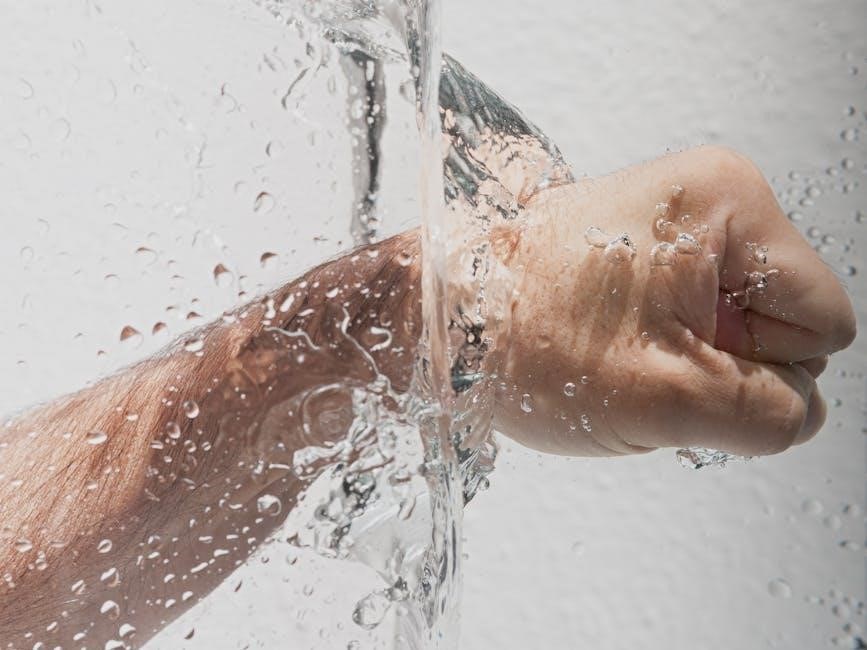
Comparison with Automatic Drip Coffee
Manual drip offers more control over brewing parameters‚ resulting in a richer flavor‚ while automatic drip is faster and more convenient for regular‚ hands-off coffee preparation.
Control Over Brewing Parameters
Manual drip coffee allows precise control over essential brewing elements such as water temperature‚ grind size‚ and coffee-to-water ratio. This customization ensures a tailored extraction process‚ enabling users to achieve their desired flavor profile and coffee strength with each brew.
Flavor Profile Differences
Manual drip coffee often yields a more vibrant and nuanced flavor profile compared to automatic methods. The slower‚ controlled extraction brings out subtle notes and aromas‚ offering a cleaner and brighter taste. This method minimizes bitterness and highlights the coffee’s natural characteristics‚ providing a richer sensory experience for coffee enthusiasts.
Manual drip coffee emphasizes craftsmanship over convenience‚ requiring time and effort for each brew. Unlike automatic machines‚ it involves a hands-on process‚ making it less suitable for rushed routines but ideal for those who value precision and the joy of creating a personalized coffee experience.
Health Benefits of Manual Drip Coffee
Convenience vs. Craft
Manual drip coffee emphasizes craftsmanship over convenience‚ requiring time and effort for each brew. Unlike automatic machines‚ it involves a hands-on process‚ making it less suitable for rushed routines but ideal for those who value precision and the joy of creating a personalized coffee experience.
Antioxidant Content
Manual drip coffee retains high levels of antioxidants due to its minimalistic brewing process. The natural oils and beneficial compounds in coffee beans are preserved‚ offering potential health benefits like improved heart health and reduced inflammation. Using freshly roasted beans enhances antioxidant intake‚ making manual drip a healthier choice for coffee enthusiasts.
Caffeine Control
Manual drip brewing allows precise control over caffeine levels by adjusting the coffee-to-water ratio‚ grind size‚ and steeping time. This customization enables you to tailor the strength to your preference‚ ensuring the perfect balance of flavor and caffeine intake without over-extraction or under-extraction.
Minimizing Impurities
Manual drip methods use filters to effectively remove impurities and oils from the coffee‚ resulting in a cleaner taste. Unlike unfiltered brews‚ this process reduces the presence of cafestol and kahweol‚ which can increase cholesterol levels‚ making it a healthier option for coffee enthusiasts.
Environmental Impact of Manual Drip Coffee
Manual drip coffee reduces waste by using reusable filters and producing minimal disposable materials. It also eliminates the need for electricity‚ making it an eco-friendly brewing option.
Reduced Waste
Manual drip coffee significantly reduces waste by using reusable filters and minimal disposable materials. Unlike automatic brewers‚ it avoids single-use pods or paper filters‚ minimizing landfill contributions. The method promotes sustainability by encouraging the use of durable‚ long-lasting equipment‚ thereby reducing overall environmental impact over time.
Energy Efficiency
Manual drip brewing is energy-efficient as it requires only a kettle for boiling water. Unlike automatic coffee makers‚ it doesn’t need constant electricity to maintain heat or operate‚ reducing overall energy consumption. This method promotes eco-friendly brewing without relying on power-hungry devices‚ making it a sustainable choice for coffee enthusiasts.
Sustainable Practices
Manual drip coffee supports sustainable practices by minimizing waste and reducing reliance on single-use materials. Reusable filters and durable equipment lower environmental impact. Additionally‚ the method encourages the use of ethically sourced‚ high-quality coffee beans‚ promoting eco-conscious consumption and reducing the carbon footprint associated with coffee production and distribution processes.
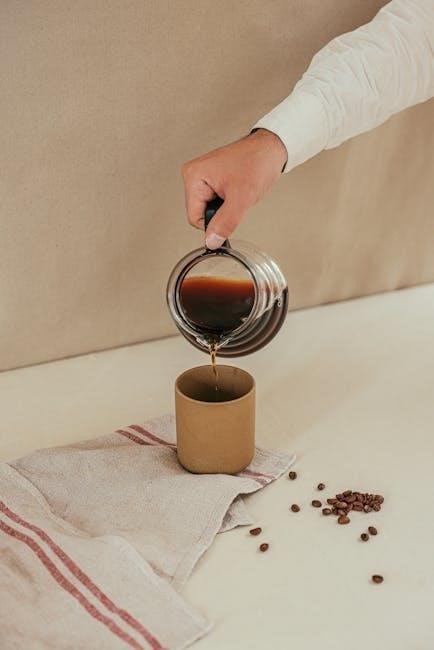
Popular Manual Drip Coffee Methods
Popular methods include pour-over‚ Chemex‚ and V60‚ each offering unique flavor profiles and techniques. These manual brewing styles emphasize craftsmanship and customization‚ appealing to coffee enthusiasts worldwide.
Pour-Over
The pour-over method involves manually dripping hot water over ground coffee beans in a cone-shaped filter. It allows for precise control over brewing parameters like water temperature and flow rate‚ resulting in a clean and flavorful cup. This technique is popular among coffee enthusiasts for its simplicity and versatility in customization.
Chemex
The Chemex method uses a thick glass container with a paper filter to brew coffee. It combines manual pour-over techniques with an hourglass-shaped design‚ ensuring balanced extraction. The result is a smooth‚ full-bodied coffee with minimal acidity‚ making it a favorite among those who appreciate a clean‚ refined flavor profile and elegant brewing process.
V60
The V60 method‚ developed by Hario‚ uses a cone-shaped dripper to manually brew coffee. It involves pouring hot water in a circular motion over ground beans‚ allowing for precise control over extraction. The V60 produces a bright‚ nuanced cup with a clean finish‚ making it a popular choice for coffee enthusiasts who value flavor customization and simplicity.
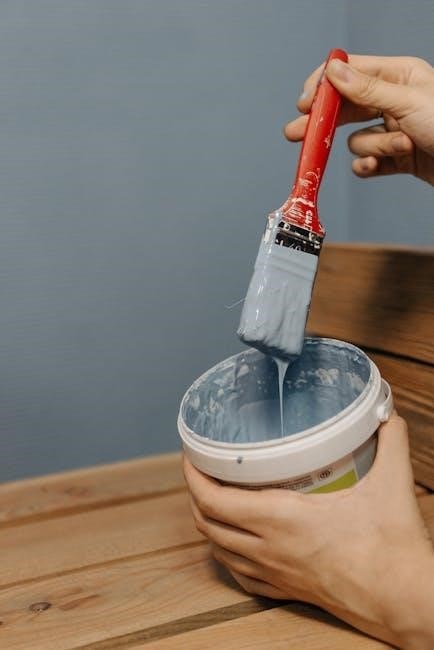
Troubleshooting Common Issues
Common issues in manual drip coffee include bitter or sour taste and uneven extraction. These are often due to incorrect grind size‚ water temperature‚ or pouring technique.
Bitter Coffee
Bitter coffee in manual drip brewing is often due to fine grind size‚ leading to over-extraction. High water temperature or excessive coffee-to-water ratio can also cause bitterness. To fix‚ adjust to a medium-coarse grind‚ ensure water is between 195°F-205°F‚ reduce coffee amount‚ and shorten brew time for a balanced flavor.
Sour Coffee
Sour coffee in manual drip brewing occurs due to under-extraction‚ often from a coarse grind size or insufficient brew time. To correct‚ adjust to a medium grind‚ ensure water temperature is optimal‚ and extend the brewing time slightly. This balances extraction‚ reducing acidity and yielding a smoother‚ sweeter flavor.
Uneven Extraction
Uneven extraction occurs when coffee grounds are inconsistently saturated‚ leading to some areas being over- or under-extracted. Causes include uneven grind size and improper pouring technique. To fix‚ ensure a uniform grind‚ pour water in a steady‚ circular motion‚ and saturate all grounds evenly during blooming. This promotes balanced flavor and optimal extraction.
Manual drip coffee brewing offers precise control and high-quality results‚ making it a favorite among coffee enthusiasts. By mastering grind size‚ water temperature‚ and pouring techniques‚ you can unlock the full potential of your coffee beans. This method’s satisfaction lies in its simplicity and ability to bring out the unique flavors‚ encouraging experimentation and perfecting the craft.
